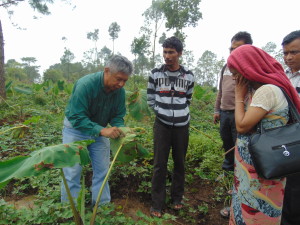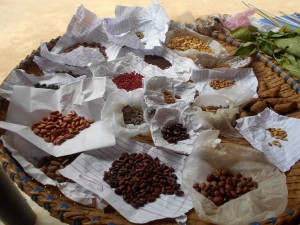Air pollution in India has become so severe that yields of crops are being cut by almost half, scientists have found.
Researchers analysed yields for wheat and rice alongside pollution data, and concluded significant decreases in yield could be attributed to two air pollutants, black carbon and ground level ozone. The finding has implications for global food security as India is a major rice exporter.
Black carbon is mostly caused by rural cookstoves, and ozone forms as a result of motor vehicle exhaust, industrial emissions, and chemical solvents reacting in the atmosphere in the presence of sunlight. Both are “short-lived climate pollutants” that exist locally in the atmosphere for weeks to months, with ozone damaging plants’ leaves and black carbon reducing the amount of sunlight they receive.
The study looked at both the effects of climate change and the two pollutants on crop yields.
“While temperature’s gone up in the last three decades, the levels of smog and pollution have changed much more dramatically,” says Jennifer Burney, an environmental scientist at University of California, San Diego, and co-author of the paper, published in the journal PNAS. “But this was the first time anyone looked at historical data to show that these pollutants are having tremendous impacts on crops.”
Comparing crop yields in 2010 to what they would be expected to be if temperature, rainfall and pollution remained at their 1980 levels, the researchers showed that crop yields for wheat were on average 36%lower than they otherwise would have been, while rice production decreased by up to 20%. In some higher population states, wheat yields were as much as 50% lower.
Using modelling to account for the effects of temperature increase and precipitation changes in that time, they were able to show that 90% of this loss is attributable to the impact of the two pollutants.
The results are specific to India’s seasonal patterns, the crops, and its high pollution levels, but may extend to other places with similar problems, such as China. Chinese scientists warned in February that severe air pollution is slowing photosynthesis in plants, with effects “somewhat similar to a nuclear winter”.
Previous studies had used experimental data looking at the impacts of ozone on plants to extrapolate potential losses, but this is the first ever study to use actual historical agricultural and emissions data to account for lower crop yields.
“Overall I think it’s a great paper,” says Stanford agricultural ecologist David Lobell. “I think in both India and China there is growing recognition of the toll that poor air quality has on agriculture. This study will certainly add to that recognition.”
Lobell and Burney both point out that because black carbon and ozone are short-lived pollutants, they present a clear opportunity for tackling climate change. While long-lived greenhouse gases like carbon dioxide and nitrous oxide can persist in the atmosphere for decades to centuries, addressing sources of the short-lived pollutants will have more immediately perceptible effects.
Measures such as improved cookstove technology for rural areas, or cleaner coal consumption and diesel filters on trucks in urban ones, could go a long way to improving the impacts on agricultural yields.
“Our thought is that these are more politically tractable points of entry for making meaningful change in climate,” says Burney. “There’s a really local benefit for taking on some sort of costly action.”
Burney also points out that because of India’s key role in exporting rice, such efforts could play a critical role in helping global food security.
Content Source: http://www.theguardian.com/environment/2014/nov/03/india-air-pollution-cutting-crop-yields-by-almost-half?CMP=share_btn_link



